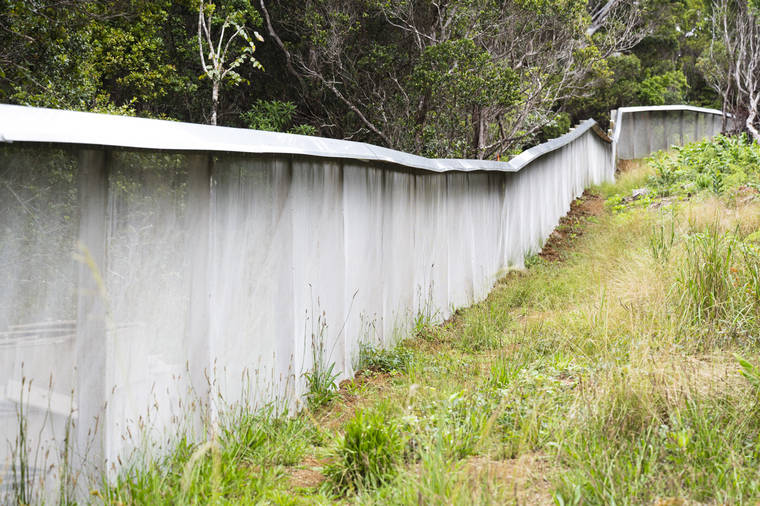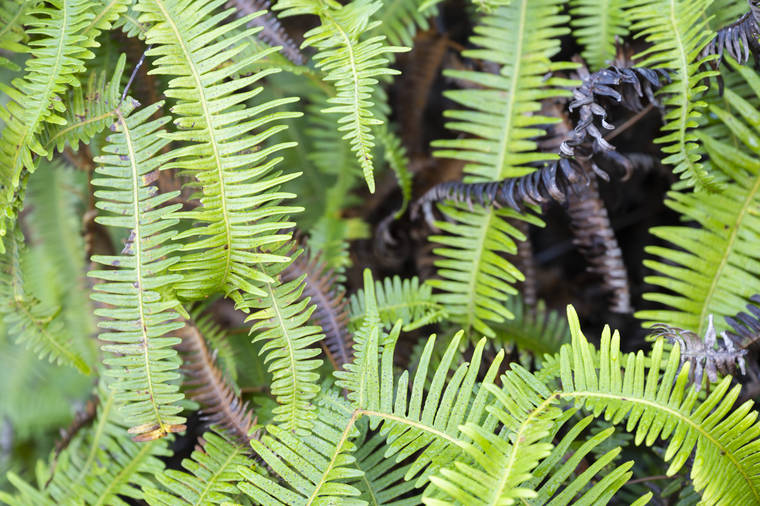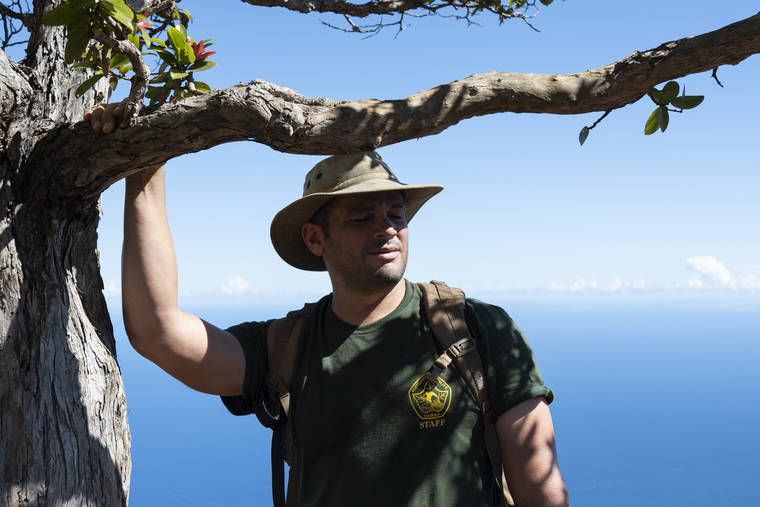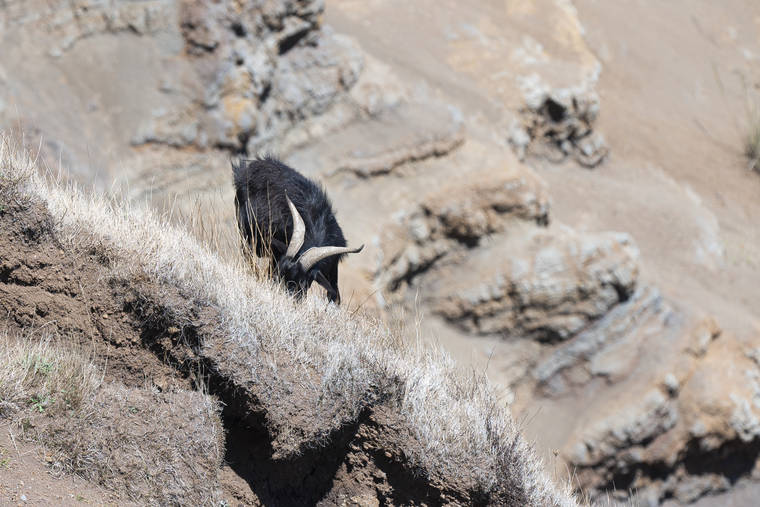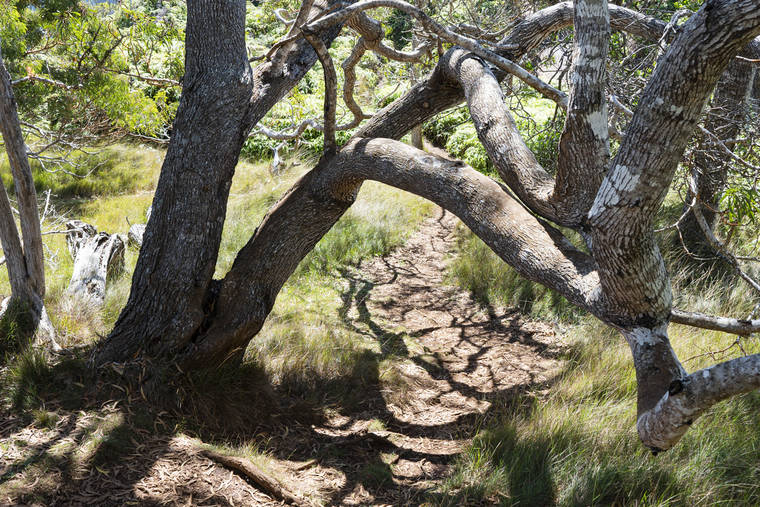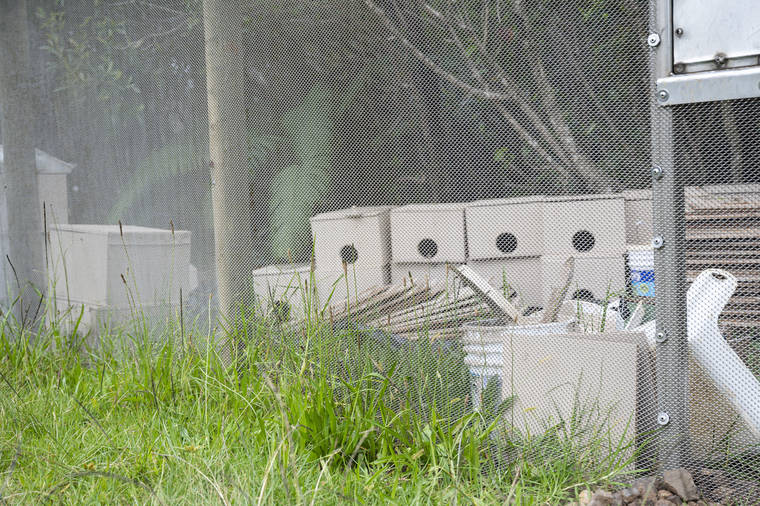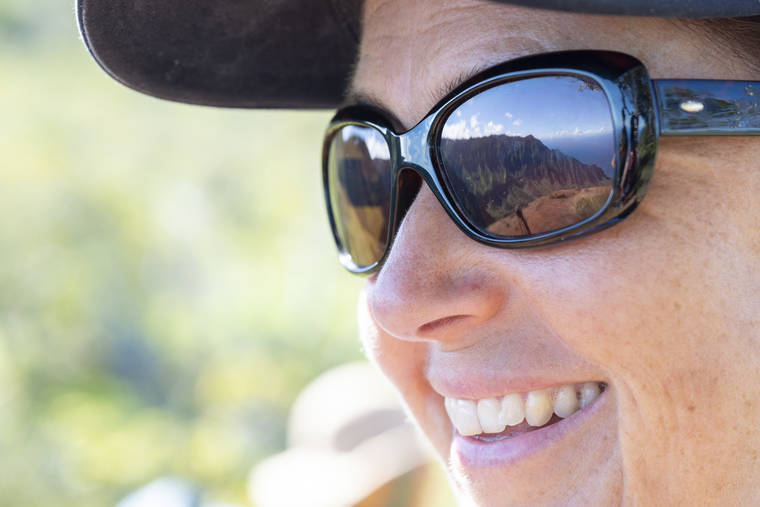HONOPU VALLEY — The state Department of Land and Natural Resources Division of Forestry and Wildlife is building a fence enclosing nearly 240-acres in the Honopu Valley to protect native flora and fauna from invasive species.
Division personnel said the initiative, called the Honopu Ecosystem Restoration Project, is a race against time to protect a rare native habitat left intact on Kaua‘i.
“If we do not do the most we can in the time that we have, we are likely to lose species forever,” Chris Mottley, DOFAW’s Native Ecosystems Protection and Management manager on Kaua‘i, said during a tour of the site Tuesday. “I mean, that’s forever. There’s no coming back from that.”
The project was conceptualized in 2018. When finished, it will consist first of a fenced 238.9-acre enclosure encircling the upper Honopu watershed from Kalepa Ridge to the Honopu Trail, on land divided between Koke‘e State Park and the Na Pali-Kona Forest Reserve. Within it, a fenced 3.25-acre predator-proof zone that will surround an endangered-seabird colony. Construction is now roughly 50% complete.
The 4-foot-high outer fencing follows the valley’s ridgeline. It should keep ungulates — hooved mammals like pigs, goats and deer — out of the watershed (the barrier will reach 8 feet high in places adjacent to high-jumping deer populations). These animals ravage the Kaua‘i landscape through their destructive consumption of native plants, according to DOFAW.
“The ungulates that are in here, not only are they trampling borrows — the pigs are actually predating on seabirds — they’re tearing up the native habitat,” said DOFAW Water Resource Analyst Yuki Reiss. “They’re eating the seeds. The goats cause a lot of erosion.”
Standing 7 feet high and made of a fine mesh, the inner predator-proof fence is intended to prevent damage wrought by mice, rats and cats.
Reiss said it will do more than protect the endangered Newell’s shearwater, Hawaiian petrel and band-rumped storm petrel populations nesting at the colony.
“In the predator-proof fence, having the rats out also benefits plants, because those rats are eating the seeds and the seedlings, and stopping that ability of those native plants to propagate naturally,” she explained.
Four mating pairs of seabirds currently reside in the colony. Once the predator-proof fencing is complete, DOFAW and its partners will attempt to expand the population by playing to the birds’ sociability.
“They just are attracted to the sound of other birds. So that’s why social attraction works,” Reiss said.
Kaua‘i business Archipelago Research and Conservation will set up this aspect of the project, which involves a solar-powered sound system.
“That means playing seabird colony calls to attract the birds into the fence, which will be a safe place to breed,” ARC Executive Director Helen Raine told The Garden Island in an email.
Reiss compared the intended effect to a singles’ party for avians held in a safe haven.
“Those prospecting birds are coming back to Kaua‘i because that’s where they were born, but they haven’t established a nest site yet,” she explained. “They’ll start coming in based on those calls. They’ll arrive, pairing up, and start digging burrows.”
DOFAW has already installed 50 pre-made burrows to expedite the colonization process, and invited hunters to assist with game removal in the area.
The Honopu project is primarily funded by the U.S. Department of Defense Readiness and Environmental Protection Integration (REPI) program to improve conditions for the federally protected seabirds. The $1.2 million in REPI monies is supplemented by up to $500,000 from the state, according to Reiss.
Mottley’s native ecosystems protection team has been granted management over the project site by DLNR. He believes the work is of vital importance, and credits local DOFAW Branch Manager Sheri Mann and state Native Ecosystems Protection and Management Manager Emma Yuen for pursuing the resources needed to get the fencelines off the ground.
“We’re basically buying time for future generations,” Mottley said. “They deserve that opportunity and right to experience the native ecosystem.”
The predator-proof fencing is set for completion by the end of 2021. Completion of the ungulate fence should occur sometime in 2022.
“I think, essentially, Kaua‘i is at the point where this is what’s left … upper forests,” Reiss concluded, standing on a ridge overlooking Honopu Valley to the sea below. “Fencing is the primary means that we can come about to protect these, because of all the things that get protected: the native plants, the watershed, the seabirds, the whole ecosystem.”

